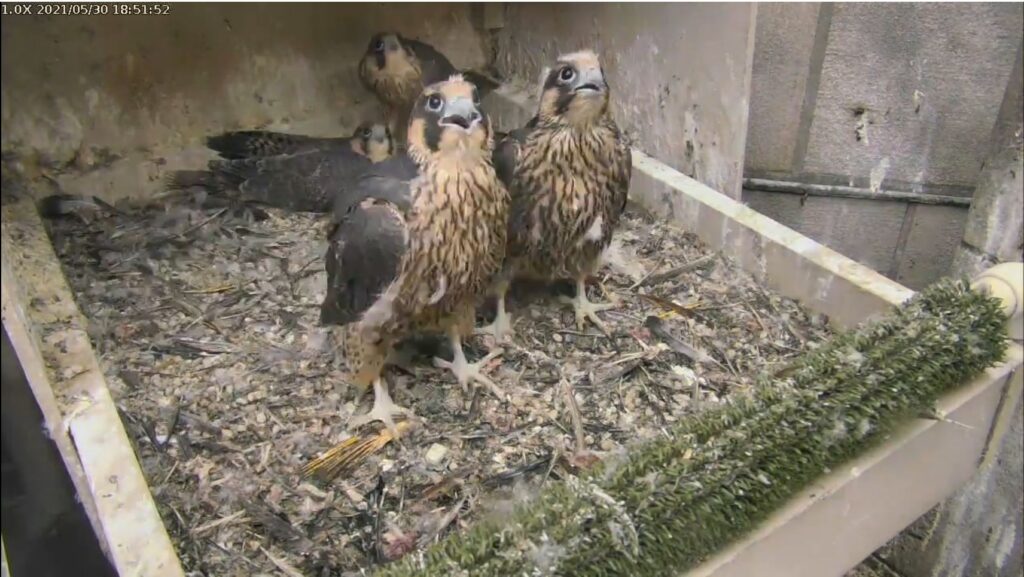
31 May 2021
In one week from 23 to 30 May 2021 the Pitt peregrine chicks changed a lot. Having hatched on 25 April 2021 (the fourth hatched a day later), they turned five weeks old.
On Sunday 23 May 2021 most were 28 days old, the fourth was 27 days. Notice that they were fluffy white with a few patches of brown feathers. Only one had a brown chest with downy fluffs.
The video below shows them resting during the heat of the day and lining up in an orderly fashion for each feeding. They are so well behaved that Ecco stays with them and sunbathes. It was hot — 87 degrees F in the shade!
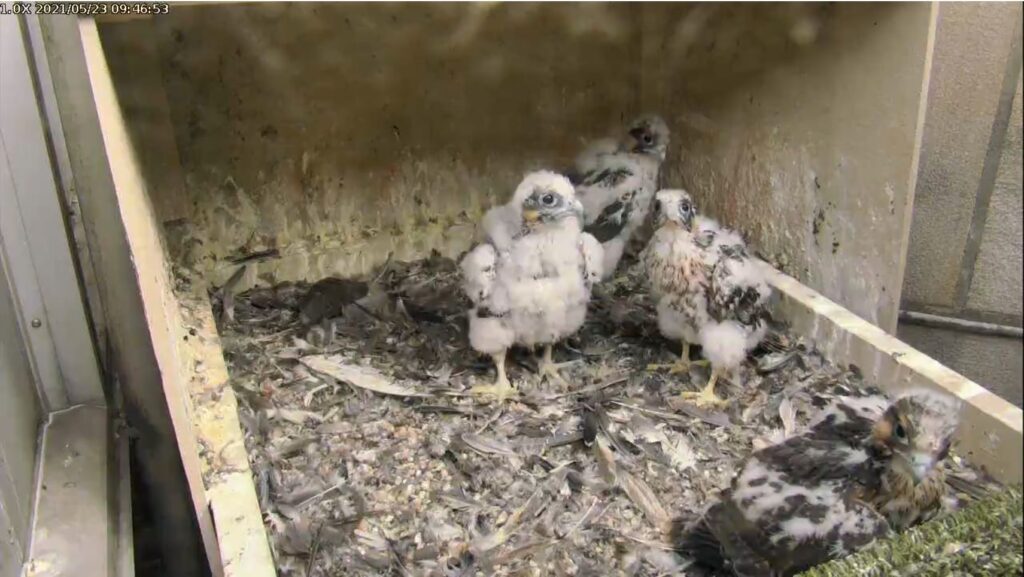
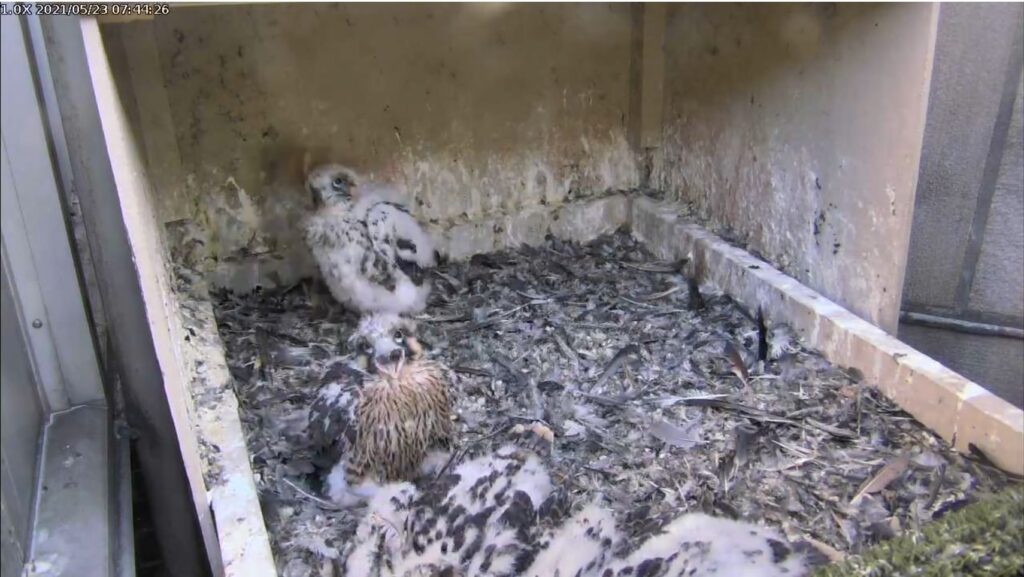
On Sunday 30 May, they were 35 (and 34) days old and far more rambunctious! On the previous morning a chick snatched breakfast from Ecco’s beak and mantled over her private feast. Well, they’re old enough to feed themselves so that was the end of the lineup. Yesterday their parents just dropped the food and ran.
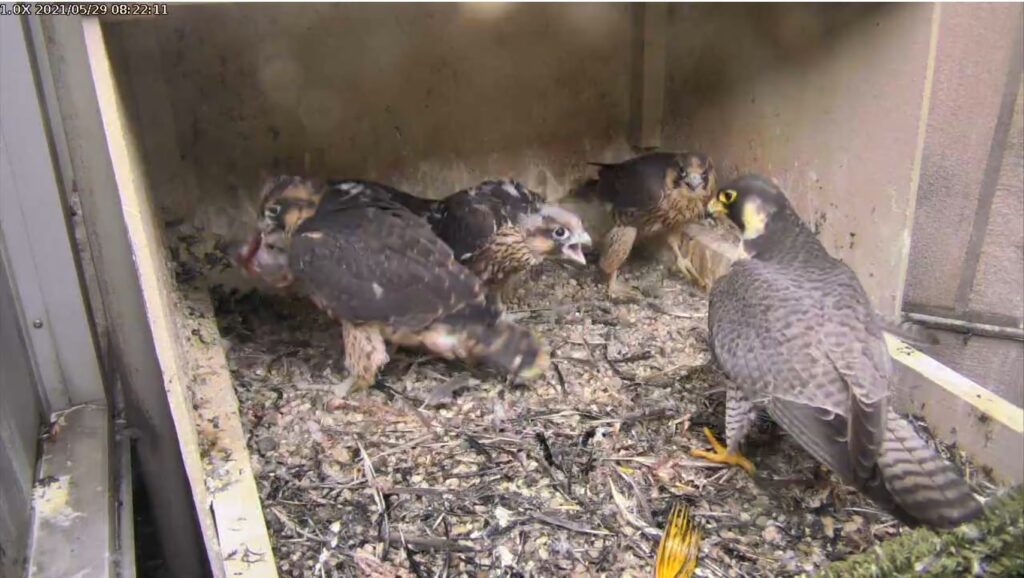
When a parent perched above them, the chicks tried to get as close as possible on the green perch or the side of the box.
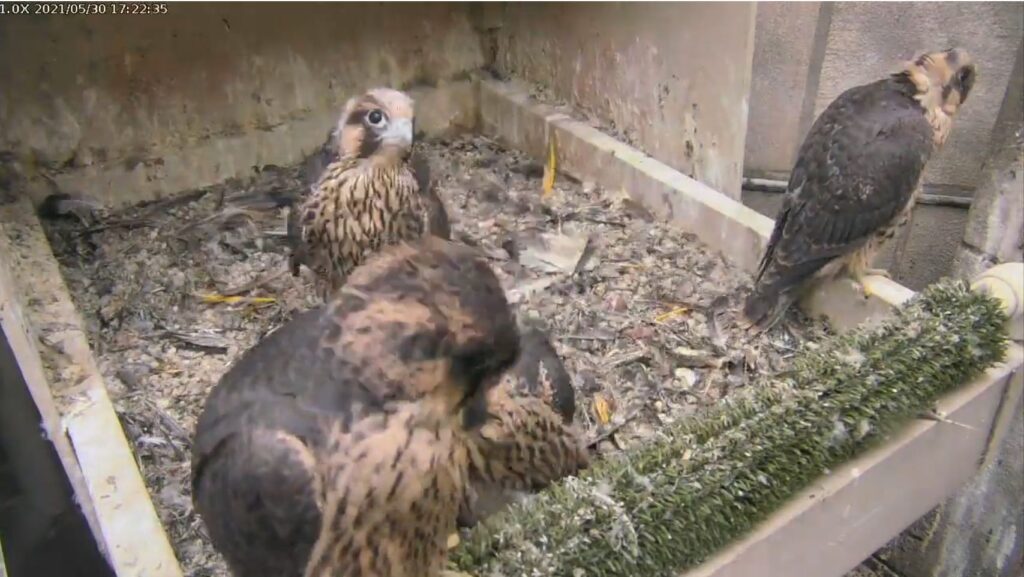
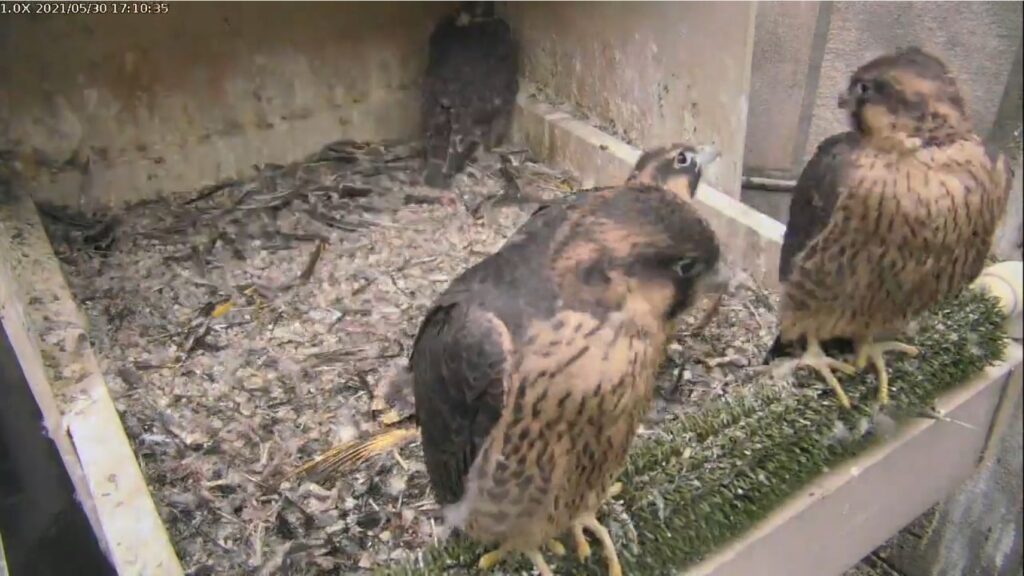
When they see their parents they crowd and shout and flap their wings.
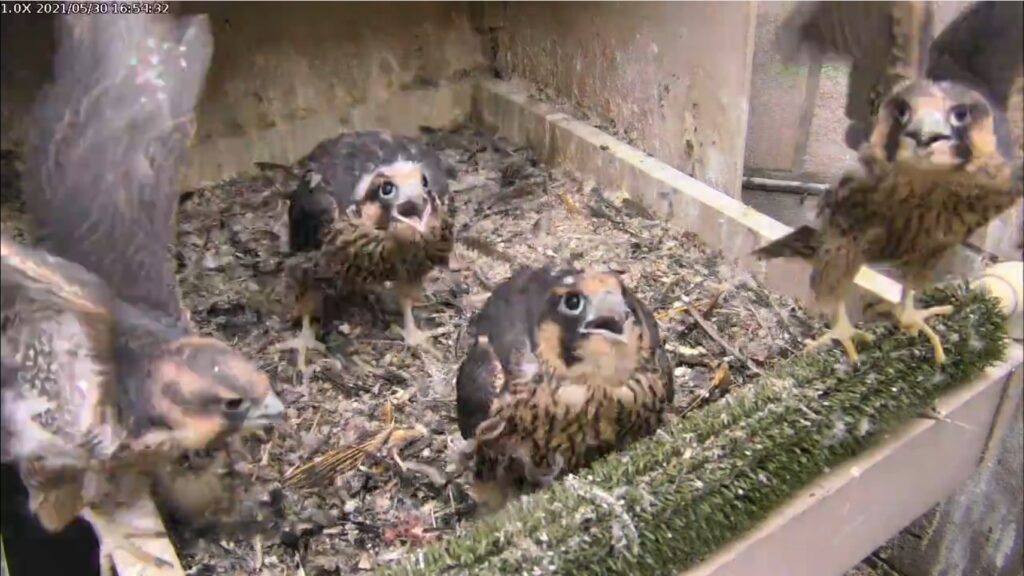
One day soon all this restless activity will lead to first flight. Before that happens they will ledge walk up to the nest rail and disappear from camera view. Here’s a digiscope view of the nestrail with one of the adults on it.
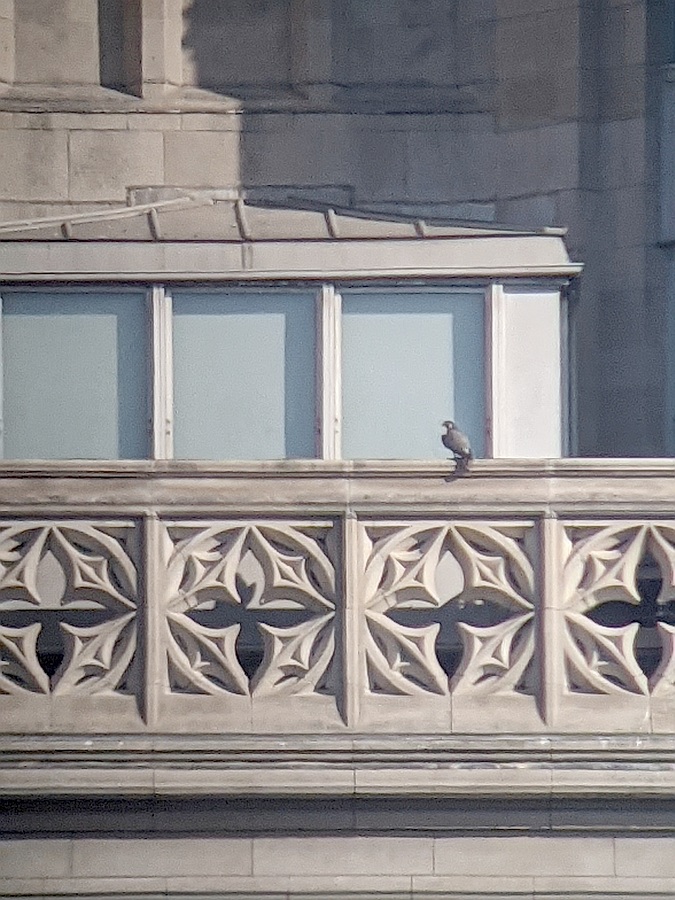
Come down to Schenley Plaza in the next week to 10 days to see the Pitt peregrine chicks learn to fly. Join me for Fledge Watch at Schenley Plaza on June 2, 4, 6.
(photos and video from the National Aviary falconcam at Univ of Pittsburgh)
They have grown up so quickly and am excited to see them fledge. This nest is a joy to watch again after a few difficult years. Parents have done a great job raising these youngsters. Not an easy task with four to feed and protect. Hoping for successful and safe fledges for them. They are beautiful birds.
Goodness, quite the tug of war going on at lunchtime today. They are certainly doing a good job of feeding themselves!
Kate, any additional thoughts on their genders? To my eye, there appears to be one very large bird, a female I’m guessing. The other three seem to be about the same; does that mean they may be males? Without testing and/or banding, we’ll never know but I’d love to hear what the thinking is from the experts. Thanks!
Genders: some think 3 female 1 male. I think 2f & 2m. As you say we’ll never know
will the orange coloring fade to white as they mature?
Peregrines molt their feathers every year. By age two all the brown and cream colored feathers will be replaced by charcoal gray and white feathers.
They grow up so quickly. Wonderful!